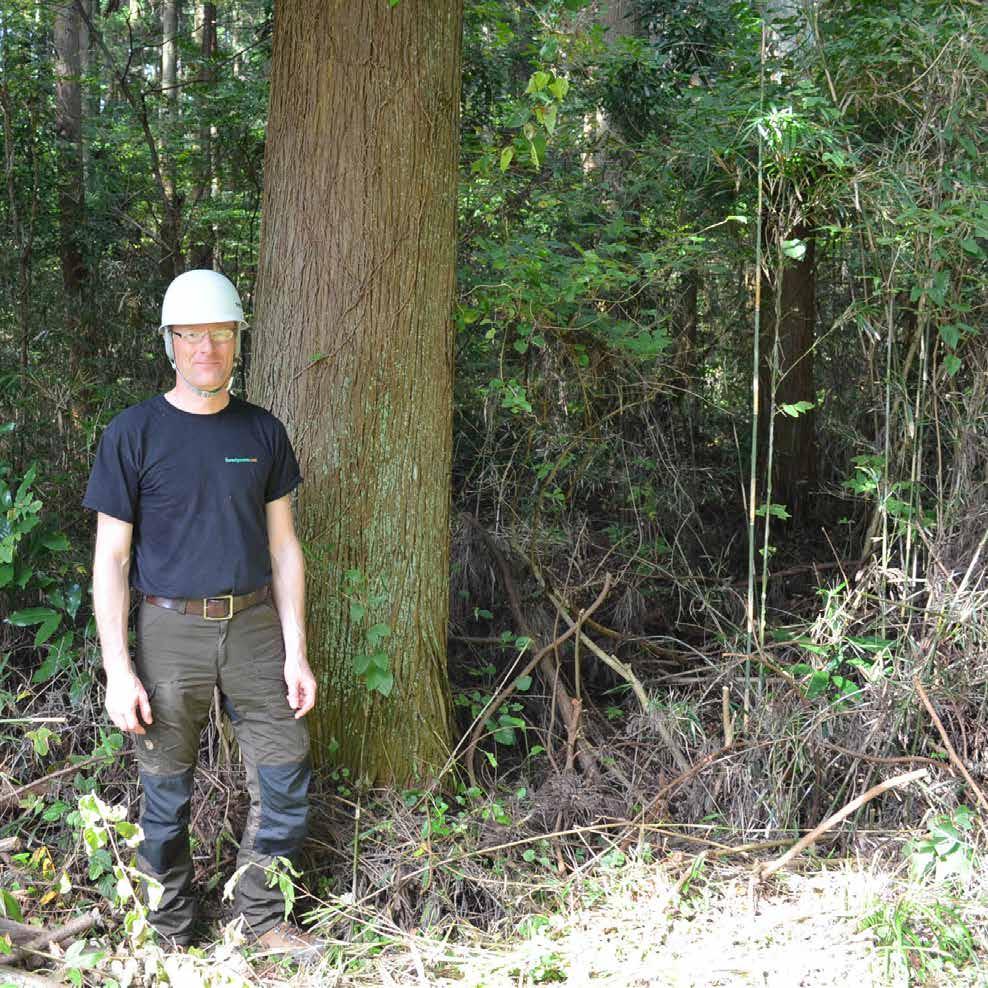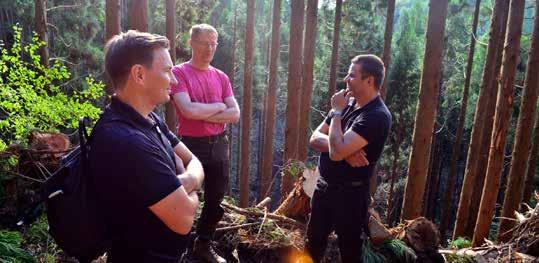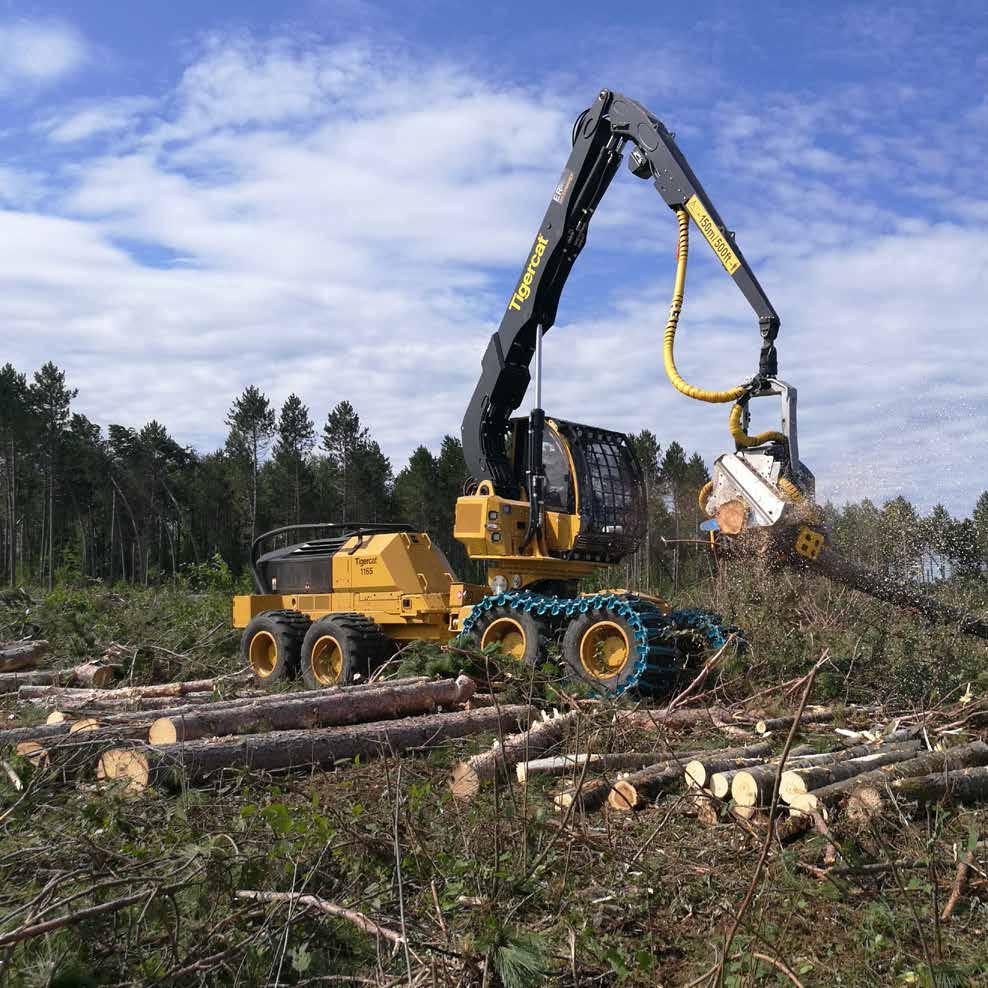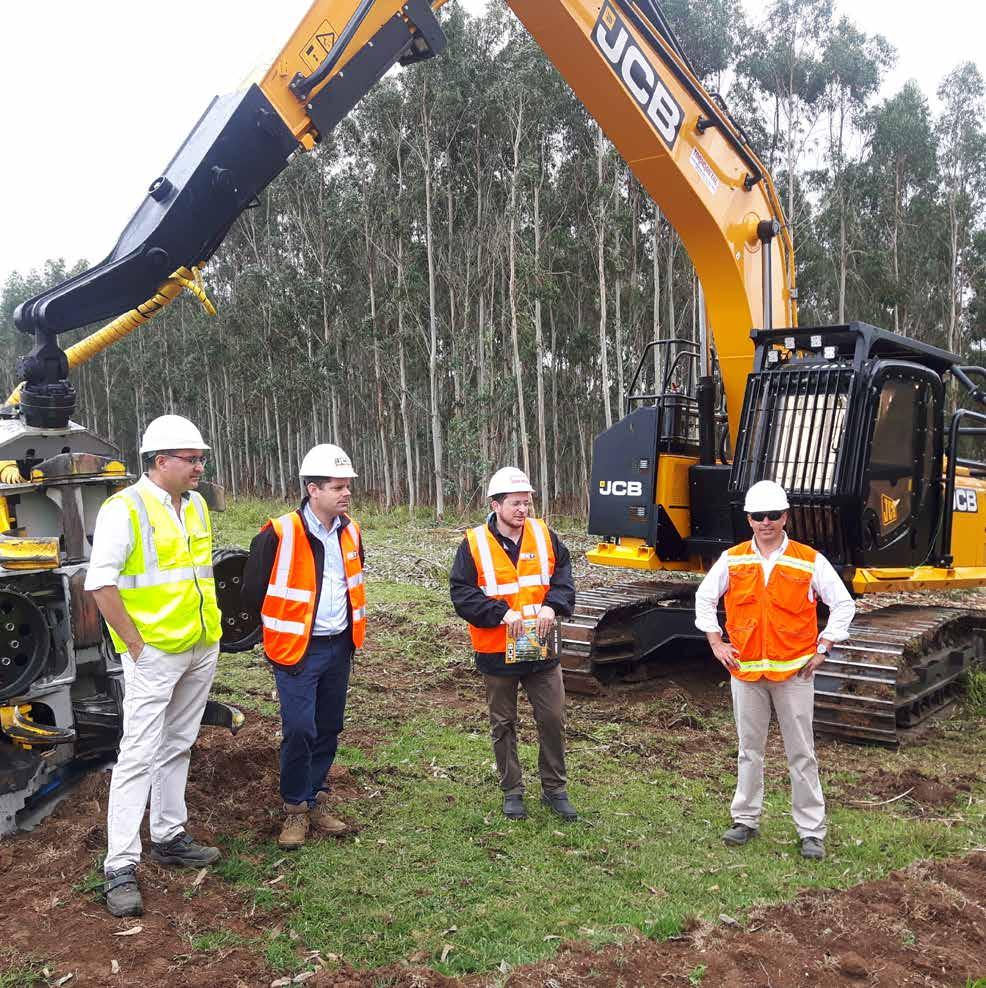
4 minute read
Some kind of afforestation boom will still come
The photo shows Antti Asikainen, Executive Vice President for Research in Japan in 2016.
The original quote belongs to Luke’s Executive Vice President for Research, Antti Asikainen, who was asked by Talouselämä magazine in March 2019 what an individual can do for the climate.
Quake boosts bio-trend
In March 2011, the Fukushima Daiichi nuclear power plant in Japan was in the eye of a storm. The power plant was cut off, and the backup power generators failed. The water in the condensation pool boiled and the cores of three reactors melted. Nearly 19,000 people died in the chaos and tsunami caused by the earthquake, comparable to the Chernobyl nuclear accident. Before the disaster, Japan produced a quarter of its energy from nuclear power. After the accident, more than 50 nuclear power plants were shut down in the country. Kesla, which was already active on the Japanese market at the time, was also affected by this series of events. “Japan launched a bioenergy programme, which has increased the use of forest energy very quickly – a bit like in Finland in both sides of the 2010s,” says Antti Asikainen. Japan had already implemented an extensive reforestation programme from the 1950s to 1970s. The country’s forest resources – over 6 billion m3 – are twice the size of Finland’s.
Antti Asikainen, then Professor of Forest Technology at the Finnish Forest Research Institute Metla, predicted in the history of Kesla published on the company’s 50th anniversary that by 2020 the use of forest energy in Finland would reach 12 million m3 .
“Its use increased to 7–8 million m3 – 2015 was the turning point of the forest energy boom. The use of wood energy has increased further, but the growth has come from industrial by-products.
The Finnish forest energy boom now appears to have moved to Japan due to natural disasters. Kesla, in turn, is a global operator in the forest equipping of tractors, and the company has a good reputation in Japan, according to Asikainen.

Janne Häyrynen (front left) from Kesla, Antti Asikainen (back) and Kimmo Paakkunainen (right) from Kesla.
Blowing your nose on a tissue
In Finland, the forest energy boom transitioned to pulp boom, and the sawmill industry recovered rapidly in the 2010s.
“When people pack into the cities, almost everything they consume every day is packaged several times. Most of the growth in demand has gone into plastics, but quite a large share into fibre-based products as well. And a citizen of this age can no longer do without different kinds of soft tissue.”
A question of value
“Forest resources are ultimately the largest and in the best condition in places where forests have been managed and used. On the other hand, if forests are of no value, they are often cleared for fields. In South America, for example, the main reason for deforestation is not the forest industry but soya and wheat cultivation because timber does not pay. Asikainen has equally grim news from the United States, where the forest industry is in dire straits. “Foreign investors buy forest industry facilities. Not for the factory, but for the land. They cut down the forest and grow peanuts instead."
Good to cut down the tree
Let us get back to the beginning of the story and the climate issue. Can forests still be felled in the future? Yes, says Asikainen, after casting a concerned glance towards Canada. According to Asikainen, Canada should cut down hundreds of millions of cubic metres every year. “In Canada, logging might be a real climate act!" There, the situation is that the forest resources no longer grow and sequester carbon, and instead the carbon is released into the atmosphere. In recent years, Canadian forests have been a huge source of emissions – an area the size of Belgium burns there every year. Large areas of dead standing forest flare up easily. According to Asikainen, the destruction is a chain reaction. Forest management, global warming and the mountain pine beetle are among the reasons for this. The latter is a wretched insect pest. Trees damaged by the mountain pine beetle become covered with blue stain fungus, which dyes the wood a blueish grey. “With global warming, the beetle has spread to protected areas and commercial forests, wiping out a billion cubic metres of forest so far. The climate benefits would have been enormously greater if the mountain pine beetle had been delimited in time through sanitation felling to prevent the damage from spreading. Canadian forests are burning far away, but we also run the risk of pests in Finland, with the spruce bark beetle going after old and dense spruce woods. Forest management logging needs to be continued, forests exploited and timber harvested." In the opinion of Asikainen, the expectations for the positive climate effects of forests are excessive, and the bioeconomy cannot replace the huge fossil economy. We would run out of biomass and come against the ecological boundaries even before that.

Kesla’s forest machines are seen all over the world. This photo is from the Northern parts of the United States.

First presentation of the KESLA 30RH-II harvester head in Uruguay. From left Adrián García (Tornometal), Neivo Person (JCB), Victor Salomon (Tornometal) and Martin Ibarra (Tornometal). Tornometal represents KESLA products in Uruguay.










